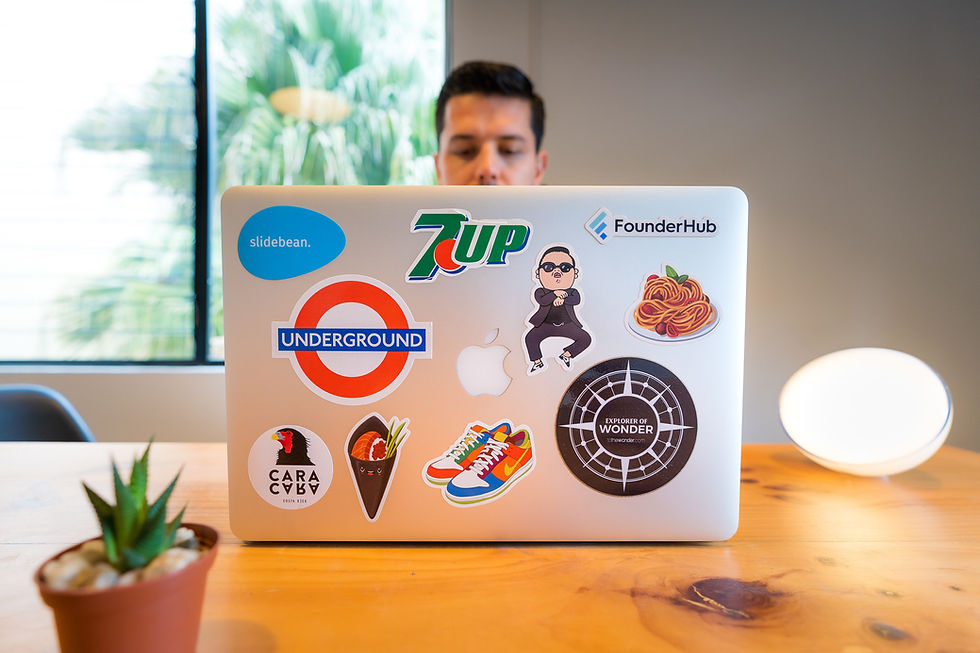How Small Brands Get Chosen in a Fast, Full World
- Lance Cody-Valdez

- Sep 2
- 4 min read
In a world wired for speed, consumers have learned to filter out noise. Their screens are full. Their attention is fractured. And yet, small businesses thrive when they find ways to cut through that blur, not with more noise, but with sharper signals. Earning customer attention today isn’t about shouting louder; it’s about making moments matter, aligning with how people feel when they scroll, pause, click, and decide. This isn’t theory. It’s survival. For small business owners and new startups, the ability to transform momentary awareness into enduring loyalty is the new metric of relevance.

Catch Their Eye Without Breaking the Bank
You don’t need a Super Bowl ad. You need surprise. A sidewalk chalk message that loops customers into an event they weren’t expecting. A clever post that hits the cultural moment sideways. A pop-up stand that looks wildly out of place in just the right way. Attention gravitates toward novelty, especially when it's human, local, and delightfully off-script. What works isn’t scale, it’s freshness. That's why more and more business owners are choosing to leverage creative low-cost buzz tactics that land like little jolts in the everyday. These jolts create stories worth sharing, and customers are more likely to remember what made them feel something off-script than what followed a template.
Don’t Just Exist Online, Signal With Precision
Consumers are already online. The question is: Can they find you? Visibility doesn’t happen just because you have a website. It happens because your digital presence tells a coherent, valuable, findable story, one that maps to what people are already trying to solve. And no, it’s not just about having a social account or a blog. Digital success today is built on using tools that boost visibility using digital marketing, especially those that allow small teams to target specific groups, retarget effectively, and track conversion pathways. If you’re not mapping your content and campaigns to customer intent, you’re wasting digital oxygen. Visibility isn’t accidental; it’s engineered.
Use Personalisation Without Turning Into a Robot
When every email starts with “Hey [First Name],” you stop noticing any of them. But personalisation isn’t dead, it just needs to feel more human than automated. That’s where understanding behaviour over time pays off. Did the customer return something last month? Did they buy two of the same thing? Did they linger on a particular page for 45 seconds? These signals matter. Smart business owners tailor experiences with customer personalization by tracking these micro-patterns and weaving them into gentle nudges, a coupon for something they looked at but didn’t buy, or a reminder based on the weather in their zip code. The key is restraint. Personalisation should feel like care, not code.
Simplify Every Path They Take
Nothing breaks a potential customer’s momentum like friction. Too many form fields, unclear next steps, or loyalty programs that feel like puzzles. People are busy. They want clean lines and simple logic. A loyalty system that takes six steps to activate or asks for your blood type is a lost opportunity. Instead, focus on mechanics that reward people in the moment and don’t make them do math. Many small businesses are leaning into systems that design easy-to-follow loyalty systems, no blackout dates, no hoops. Just buy, get, feel good. That kind of transparency builds quiet trust, which compounds over time and outlasts even the flashiest promotions.
Follow Up Like a Human, Not a Sequence
The sale isn’t the end of the relationship. It’s the beginning of the proof. Customers who buy and never hear from you again remember that silence more than they remember your copy. And yet, following up isn’t about checking boxes; it’s about checking in. Businesses that do this well don’t rely on recycled templates. They reach back with smart follow-up methods that feel intentional: a quick note asking how the item is working, a thank-you email with a useful tip, a personal video message. Done right, follow-up transforms a transaction into a relationship, and that’s where loyalty actually starts.
Join the Scene, Don’t Just Sell to It
You’re not just a business, you’re part of a local narrative. Consumers increasingly care about what businesses stand for and where they belong. So get out there. Sponsor a park clean-up. Set up shop at a weekend market. Donate products to a community event and actually show up to talk to people. This isn’t feel-good fluff; it’s a strategy. Small businesses that participate in local events to connect don’t just get facetime, they get trust, context, and memory. People want to buy from businesses that show up before the pitch, not just during it. It’s that offline presence that often becomes the most memorable part of a digital brand.
Expand Your Capacity to Lead and Adapt
Sometimes, the most important move you can make isn’t outward, it’s internal. If your marketing isn’t landing or your customer journey feels choppy, it might not be your tactics. It might be that your strategic lens is narrow. Earning a master of Business Administration degree can expand how you think about pricing, branding, and leadership, not just from a technical standpoint, but in how you set vision and steer growth. Many professionals opt for online MBA programs that offer flexibility without compromising depth, especially useful for entrepreneurs juggling daily operations while planning their next evolution. Business acumen isn't something you're born with; it’s built.
In this fast, full world, getting noticed isn’t the same as getting chosen. And being chosen once isn’t the same as being remembered. What separates the businesses people return to, what makes someone walk three blocks farther or click one more link, isn’t noise. It’s resonance. It’s the precision of presence and the intention behind the next move. For small business owners and startups, the challenge is never just getting on someone’s radar. It’s what you do once you’re there. Make it simple. Make it human. Make it stick.
Dive into the future with ITK Magazine and explore how today’s innovations are shaping tomorrow’s world, from tech breakthroughs to cultural shifts!





